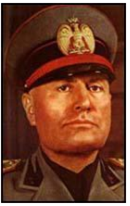 Long Answer Type
Long Answer TypeWith reference to the Union Legislature, answer the following questions:
(a) How is the Speaker of the Lok Sabha elected? State any two Disciplinary Functions of the Speaker.
(b) Explain any two conditions under which a member of Parliament can be disqualified under the Anti Defection Law.
(c) Give reasons to justify why the Lok Sabha is considered to be more powerful than the Rajya Sabha.
The President of India is the Constitutional Head of the Indian Republic. In this context, answer the following questions:
(a) How is the President elected?
(b) Mention three types of Emergencies that the President is empowered to proclaim.
(c) Explain briefly any four ‘Executive Powers’ of the President.
The Supreme Court has extensive jurisdiction. In the light of this statement, answer the following questions:
(a) What are the qualifications of the Judges of the Supreme Court?
(b) (i) Explain the composition of Supreme Court.
(ii) How are the judges of the Supreme Court appointed?
(c) Explain the cases in which the Supreme Court enjoys Original Jurisdiction.
Explain the causes of the Great Revolt of 1857 with reference to the following:
(a) Any three political causes.
(b) Any three military causes.
(c) Any four economic causes.
Through various national movements, Gandhiji mobilised public support to win freedom for India. In this context, state the following:
(a) Any three causes for Gandhiji to launch the Non-Cooperation Movement.
(b) The name given to the uprising of 1942. Two reasons for launching this mass uprising.
(c) The impact of the Non-Cooperation Movement in India’s freedom struggle.
The partition of Bengal and the formation of the Muslim League were two important events that had an impact on the national struggle for independence. In this context, explain the following:
(a) Impact of the Swadeshi and Boycott movements as part of the Anti-Partition Movement.
(b) Any three factors relating to the formation of the Muslim League.
(c) Objective of the Muslim League.

(a) Identify the leader in the picture. Give two examples to state that the leader followed an expansionist policy.
(b) State three factors that led to the rise of Fascism.
(c) State four similarities between the ideologies of Nazism and Fascism.
(a)The leader in the picture is Benito Mussolini. He was the leader of the Fascist Party of Italy and later became Italy’s dictator. He occupied the Islands of Rhodes, Dodecanese and the city of Fiume. He also forcibly captured Abyssinia in 1936. When this led to outrage in the League of Nations, he withdrew Italy’s membership from the League.
(b) Three factors which led to the rise of Fascism in Italy are :
i. Discontent after the Treaty of Versailles: Italy joined the Allies in the First World War to gain territories of Turkey and Germany. However, by the Treaty of Versailles, she managed to secure only Southern Tyrol and Trentino, and the coastal regions of Dalmatia.
ii. Economic Crisis: Italy suffered heavy losses during the First World War in terms of life and property. After the war, she faced large-scale unemployment, especially among soldiers. There was also a severe shortage of food grains.
iii. Political Instability: Democracy was introduced in Italy for the first time in 1919. However, the elections failed to give a clear majority to any one party. As a result, there was severe political instability in the country and between 1919 and 1922, Italy saw the rule of six coalition governments. The coalitions had to have several parties within their fold, which in turn resulted in fragmented policy-making and execution. These coalition governments were not able to deal with crises such as unemployment, strikes and riots which took place during 1921–22. This situation was exploited by the Fascists under Mussolini who promised a strong and decisive national government.
(c) Similarities between Fascism and Nazism were:
i. Both ideologies had faith in totalitarian rule. Both despised democracy and its political institutions.
ii. Both ideologies held the view that the State is supreme and it could suppress the fundamental rights and freedoms of individuals.
iii.Both believed in aggressive nationalism and imperialism.
iv. Both preferred ultra nationalistic, anti-communist and anti-democratic rule.
With reference to the United Nations and its related agencies, answer the following questions:
(a) Explain any three functions of the WHO.
(b) State the composition of the International Court of Justice.
(c) State any four functions of the General Assembly.
